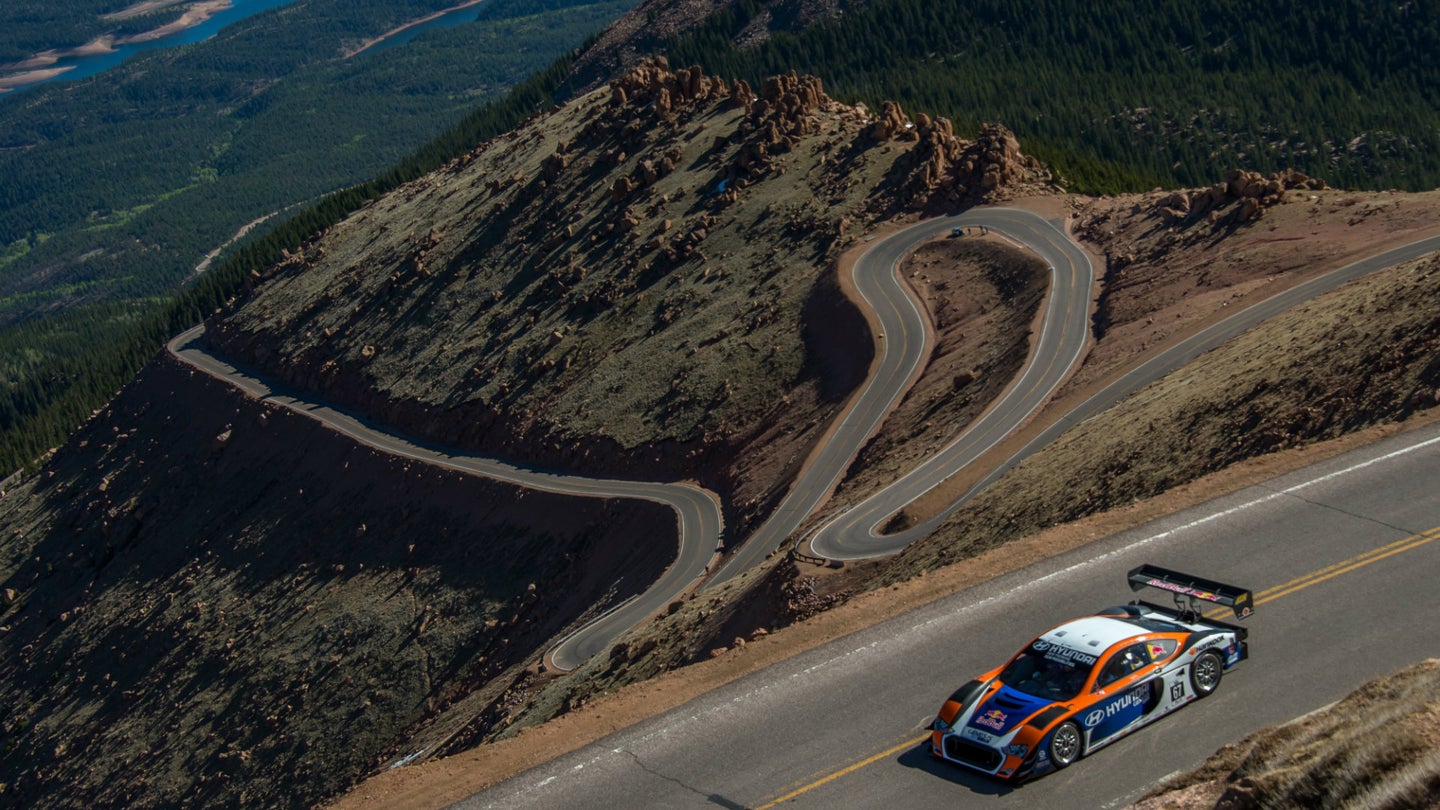Everyone Should Care About the Pikes Peak Hill Climb
Pikes Peak is one of the world’s most extreme races…but not nearly as well-known as it should be.

Pikes Peak is known to Coloradans as a "Fourteener," a mountain whose peak surpasses 14,000 feet of elevation—one of 53 in the state. It was named in honor of American explorer Zebulon Pike, and is the single highest point in the United States at or east of its longitude. It is also the site of the Pikes Peak International Hill Climb, known to some as the Race to the Clouds—the longest, most extreme hill climb course on the planet, and one of the most underrated motorsports events on Earth.
The starting line alone is above 4,700 feet of elevation, where atmospheric pressure is only 85 percent of that found at sea level, and at the finish line, atop the mountain at 14,110 feet, the air is 63 percent as thick as it is is by the ocean. The course itself is 12.42 miles long, and slithers up the side of the mountain at an average grade of 7.2 percent.
The weather alone in the Rocky Mountains is so unpredictable that all four seasons can be experienced in a single day, with snow falling before dawn, turning the roads slushy, and the sun baking the tarmac dry again by noon. It may have gone from a dirt road to a fully paved road between 2002 and 2012, to the dismay of some of its most venerable fans, but do not be fooled by their mourning—the race is now faster than ever.
On top of all this, the race organizers have never seen fit to tell anyone they cannot bring a certain kind of car. Every race series out there, from the WRC to WEC and F1, have its limits, regulations to prevent cars from being too fast, too expensive, and too dangerous. Pikes Peak has no such chain around its neck; it remains one of the few remaining international races on the planet with no limits. Entrants can bring anything they damn well please, from time attack cars built with Le Mans technology to 2,600-horsepower Freightliner semi trucks, and even purpose built electric cars so quiet they need a siren blaring to get people and animals to stay clear of the road.
Speaking of electric cars, Pikes Peak is the only race that shows the true potential of electric race cars. Formula E tries to make electric racing appealing, but with only 270 horsepower on tap in each car, fans are not flocking to watch it. At Pikes Peak, however, the relatively short length of the course allows for electric cars to put out maximum power without fear of running out of juice. Nobuhiro "Monster" Tajima's 2016 car, for example, made nearly 1,500 horsepower. 2016 saw a new electric production car record breaker, too, as a Tesla Model S ascended the mountain in under 12 minutes.
Given the combination of a dramatic and dangerous course, cars without reins on their power, weight, or downforce, and technological relevance, Pikes Peak shouldn't just be on your consciousness, it should be an obsession. If you can travel to Colorado Springs, Colorado, this June 25th for the 101st running of the Pikes Peak International Hill Climb, and deal with the high altitude and scalding sun, you should. I never forgot my first time, and neither will you.
